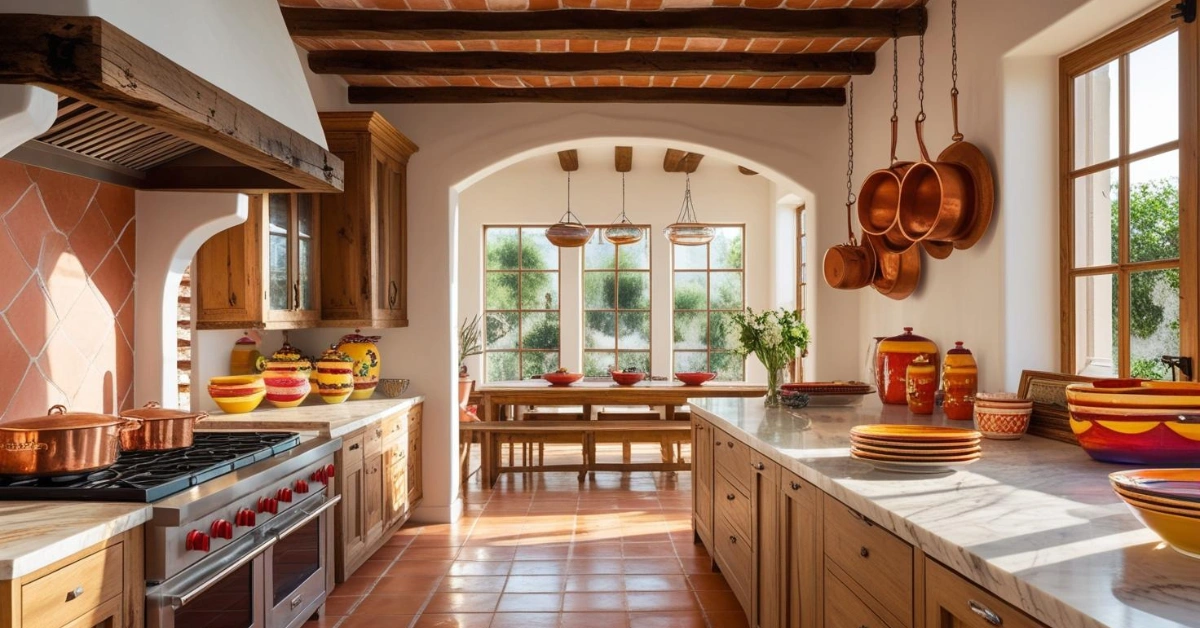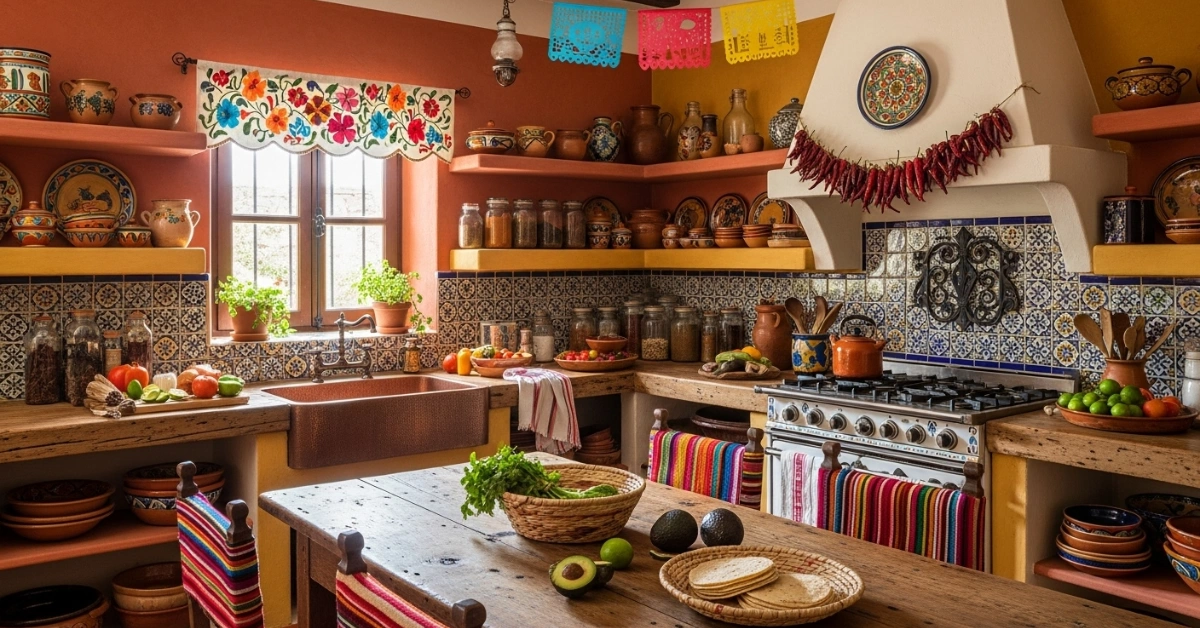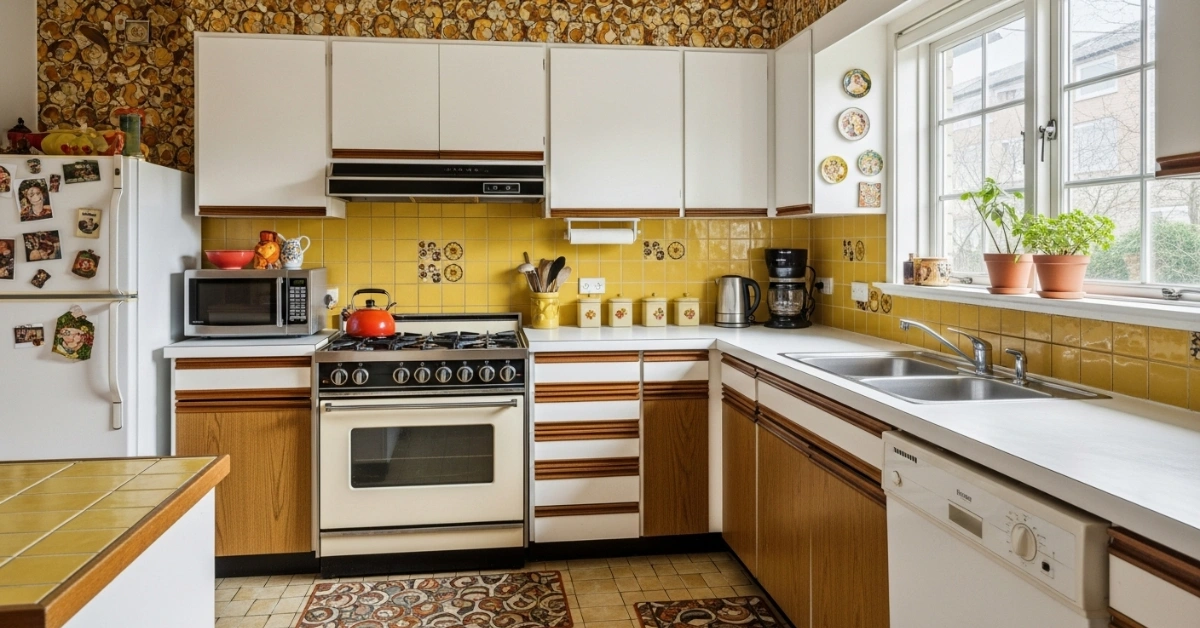Japandi Kitchen Design: 25 Ideas for a Serene Space
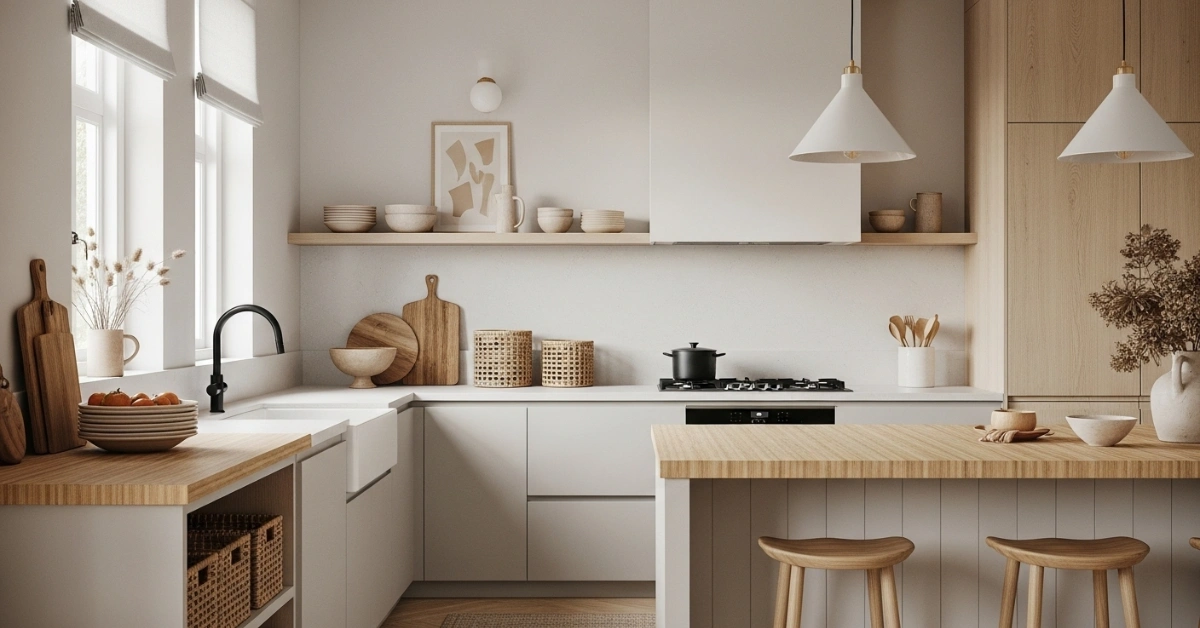
Creating a kitchen that feels both serene and functional can be challenging. Many homeowners struggle with cluttered spaces, outdated designs, or a lack of harmony, leaving them longing for a kitchen that inspires calm and creativity. Japandi kitchen design, a fusion of Japanese minimalism and Scandinavian coziness, offers a perfect solution. By combining clean lines, natural materials, and warm textures, this style transforms kitchens into inviting, clutter-free havens that balance aesthetics and practicality.
In this guide, we’ll explore the essence of Japandi kitchen design, its core principles, and actionable ideas to bring this style into your home. From color palettes to storage solutions, you’ll find inspiration to craft a space that’s both timeless and uniquely yours.

What Is Japandi Kitchen Design?
Japandi kitchen design merges the best of two worlds: Japanese simplicity and Scandinavian warmth. This hybrid style emphasizes minimalism, functionality, and natural beauty, creating spaces that feel calm yet welcoming. According to a 2023 survey by Houzz, 38% of homeowners renovating their kitchens prioritized minimalist designs, with Japandi gaining popularity for its balanced approach.
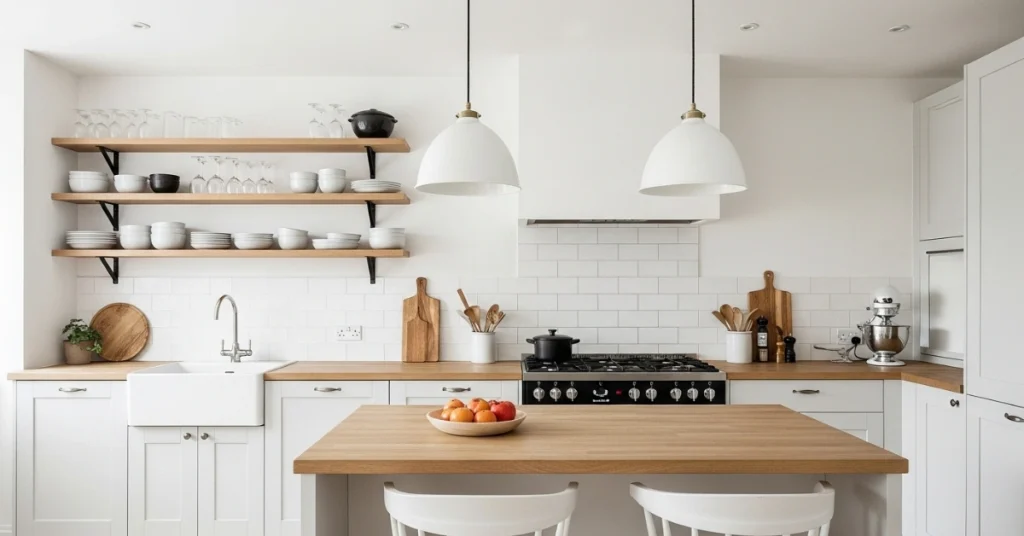
The Origins of Japandi
The term “Japandi” emerged in the early 2010s, blending “Japan” and “Scandi.” Japanese design draws from Zen philosophy, focusing on simplicity, natural materials, and mindfulness. Scandinavian design, rooted in Nordic traditions, prioritizes functionality, light, and coziness (often called hygge). Together, they create a harmonious aesthetic that feels modern yet timeless.

Core Principles of Japandi Kitchen Design
To create an authentic Japandi kitchen, focus on these five principles:
1. Minimalism with Purpose
Japandi kitchens avoid excess. Every item serves a function, and decorative pieces are chosen thoughtfully. For example, a single ceramic vase might double as a utensil holder, adding beauty without clutter.

2. Natural Materials
Wood, stone, bamboo, and linen dominate Japandi kitchens. These materials bring warmth and texture, grounding the space in nature. According to Architectural Digest, natural wood cabinetry was a top trend in 2024 for its organic appeal.

3. Neutral and Earthy Color Palettes
Soft whites, warm grays, muted greens, and earthy browns create a calming atmosphere. Accents like charcoal or terracotta add depth without overwhelming the space.

4. Functional Beauty
Japandi kitchens prioritize usability. Open shelving, hidden storage, and streamlined layouts ensure the space is practical and visually appealing.

5. Balance of Warmth and Simplicity
While Japanese design leans cool and minimal, Scandinavian influences add warmth through textiles, lighting, and cozy details. This balance makes Japandi kitchens feel inviting.

Benefits of Choosing Japandi Kitchen Design
Why opt for a Japandi kitchen? Here are key advantages:
- Timeless Appeal: Its simplicity ensures it won’t feel dated, making it ideal for long-term investments.
- Calming Environment: Neutral tones and clutter-free spaces promote relaxation, perfect for busy households.
- Versatility: Japandi works in small apartments or spacious homes, adapting to various layouts.
- Sustainability: The focus on natural, durable materials aligns with eco-conscious living.
- Increased Home Value: A 2024 Zillow report noted that modern, minimalist kitchens boost resale value by up to 7%.

Designing Your Japandi Kitchen: 25 Practical Ideas
Ready to transform your kitchen? Below are 25 detailed ideas to inspire your Japandi kitchen design, organized by key elements.
Color Palette and Finishes
- Soft Neutral Base: Use whites, creams, or light grays for walls and cabinetry. Sherwin-Williams’ “Alabaster” is a popular choice for its warm undertone.
- Earthy Accents: Incorporate muted greens or terracotta through backsplash tiles or pottery. Designer tip: “A touch of sage green adds life without disrupting the calm,” says interior designer Mia Tanaka.
- Matte Finishes: Opt for matte cabinetry over glossy finishes to avoid harsh reflections and maintain a soft aesthetic.
- Natural Wood Tones: Use light oak or ash for cabinets or countertops to add warmth. Avoid overly dark woods, which can feel heavy.

Cabinetry and Storage
- Sleek, Handleless Cabinets: Choose flat-panel cabinets with push-to-open mechanisms for a seamless look.
- Open Shelving: Install wooden shelves to display minimalist dishware or plants. Keep items sparse to avoid clutter.
- Hidden Storage: Incorporate pull-out drawers or pantry systems to keep countertops clear. “Hidden storage is key to Japandi’s clean aesthetic,” notes designer Lars Jensen.
- Bamboo Organizers: Use bamboo dividers inside drawers for utensils, aligning with the style’s eco-friendly ethos.

Countertops and Backsplashes
- Stone Countertops: Opt for quartz or soapstone in neutral tones. Soapstone’s soft texture complements Japandi’s tactile appeal.
- Subtle Backsplashes: Use handmade ceramic tiles in white or beige for a textured, artisanal look.
- Wooden Countertops: A butcher block countertop adds warmth and pairs well with white cabinetry.
- Minimal Grout Lines: Choose large-format tiles to reduce grout lines, keeping the backsplash sleek.

Lighting
- Warm Pendant Lights: Hang linen or bamboo pendant lights above the island for soft, diffused lighting.
- Under-Cabinet Lighting: Install LED strips to highlight countertops, enhancing functionality and ambiance.
- Statement Chandelier: A minimalist chandelier, like a wooden or black metal design, adds a focal point without overwhelming the space.
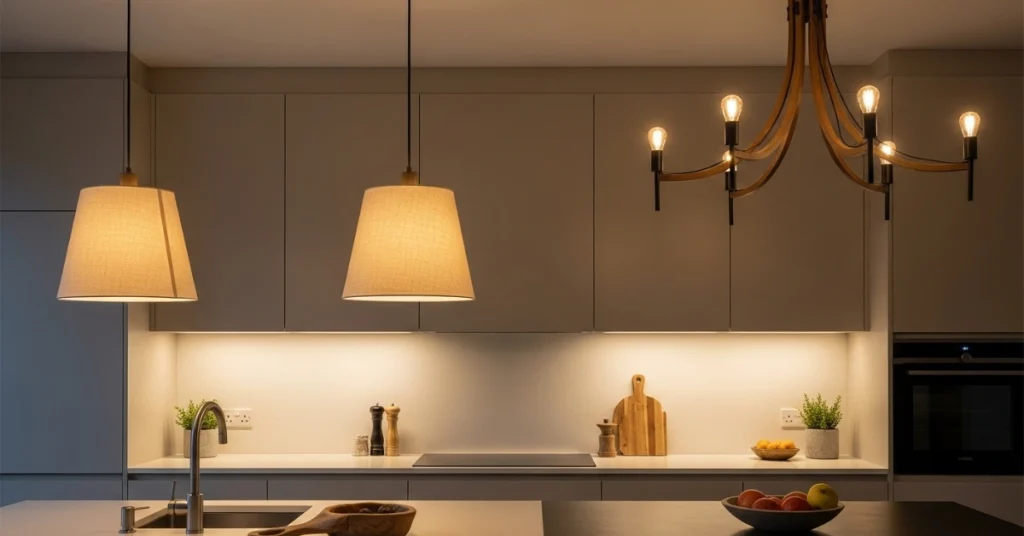
Flooring
- Light Wood Flooring: Choose wide-plank oak or maple in a natural finish to brighten the space.
- Textured Tiles: Use matte porcelain tiles in neutral tones for durability and subtle texture.
- Cork Flooring: For an eco-friendly option, cork adds warmth and comfort underfoot.

Furniture and Fixtures
- Wooden Stools: Select low-profile stools with clean lines for island seating. Avoid overly ornate designs.
- Ceramic Sinks: A white ceramic farmhouse sink adds a rustic touch while staying minimalist.
- Matte Black Faucets: Choose sleek, modern faucets in matte black or brushed nickel for a subtle contrast.

Decor and Accessories
- Minimalist Dishware: Display simple ceramic plates or bowls in neutral tones. Handmade pieces add authenticity.
- Indoor Plants: Add small potted herbs or a bonsai tree for a touch of nature. “Plants bring life to Japandi kitchens,” says designer Aiko Sato.
- Textured Textiles: Use linen napkins or cotton runners in muted colors to add warmth.
- Artisanal Accents: Incorporate a single statement piece, like a handcrafted vase or wooden cutting board, for character.

Step-by-Step Guide to Creating Your Japandi Kitchen
Ready to start? Follow these steps to design your dream Japandi kitchen:
- Assess Your Space: Measure your kitchen and note natural light sources. Small kitchens benefit from lighter colors to feel spacious.
- Choose a Color Palette: Select 2–3 neutral tones and one accent color. Test paint samples to ensure harmony.
- Select Materials: Source natural materials like wood, stone, or bamboo. Check for sustainability certifications, like FSC-certified wood.
- Plan Storage: Prioritize hidden storage to keep surfaces clear. Work with a designer to customize solutions for your layout.
- Incorporate Lighting: Mix ambient, task, and accent lighting for functionality and warmth.
- Add Personal Touches: Choose decor that reflects your style, like handmade ceramics or a family heirloom.
- Maintain Simplicity: Regularly declutter to preserve the minimalist aesthetic.

Common Mistakes to Avoid in Japandi Kitchen Design
Even with the best intentions, pitfalls can disrupt your Japandi vision. Here’s what to avoid:
- Overloading with Decor: Too many accessories create clutter. Stick to a few meaningful pieces.
- Ignoring Functionality: Aesthetic shouldn’t trump usability. Ensure your layout supports cooking and socializing.
- Using Harsh Colors: Bright or neon hues clash with Japandi’s calm vibe. Stick to earthy tones.
- Skipping Texture: Flat surfaces can feel sterile. Mix wood, stone, and textiles for depth.
- Poor Lighting Choices: Harsh fluorescent lights ruin the ambiance. Opt for warm, soft lighting.
Real-World Example: A Japandi Kitchen Transformation
In 2023, I worked with a couple in Seattle to redesign their cramped 1980s kitchen. They wanted a space that felt open and serene for family gatherings. We replaced bulky cabinets with sleek, handleless oak ones and added a quartz countertop in soft gray. Open shelves displayed their collection of handmade ceramics, while a bamboo pendant light added warmth. The result? A kitchen that felt spacious, inviting, and perfectly Japandi, with guests often commenting on its calming vibe.

Japandi Kitchen Design on a Budget
You don’t need a big budget to achieve a Japandi look. Here are cost-effective tips:
- Repaint Existing Cabinets: A fresh coat of white or gray paint can transform dated cabinets.
- Shop Secondhand: Look for wooden stools or shelves at thrift stores or online marketplaces.
- DIY Backsplash: Use peel-and-stick tiles in neutral tones for an affordable update.
- Focus on Small Details: Swap out cabinet handles for minimalist designs or add a few potted herbs.
- Use Affordable Materials: Bamboo and cork are budget-friendly yet authentic to the style.

Japandi kitchen design vs. Other Kitchen Styles
| Style | Key Features | Best For |
|---|---|---|
| Japandi | Minimalist, natural materials, neutral tones | Those seeking calm, timeless spaces |
| Modern | Sleek, high-tech, glossy finishes | Urban dwellers, tech enthusiasts |
| Rustic | Raw wood, exposed beams, earthy vibes | Country homes, cozy aesthetics |
| Industrial | Metal, concrete, exposed pipes | Loft apartments, edgy designs |
Japandi stands out for its balance of simplicity and warmth, making it versatile for various home sizes and lifestyles.
Expert Tips for Maintaining Your Japandi Kitchen
To keep your kitchen looking pristine, follow these tips from interior designer Hana Mori:
- Declutter Regularly: Set aside time monthly to remove unused items.
- Clean with Care: Use gentle, eco-friendly cleaners to preserve natural materials.
- Rotate Decor: Swap out accessories seasonally to keep the space fresh without adding clutter.
- Protect Surfaces: Use coasters and cutting boards to maintain wood and stone finishes.

Conclusion: Create Your Dream Japandi kitchen design
Japandi kitchen design offers a perfect blend of elegance, functionality, and tranquility. By embracing minimalism, natural materials, and warm textures, you can craft a kitchen that feels both modern and timeless. Whether you’re starting from scratch or updating an existing space, the ideas and tips in this guide will help you achieve a serene, inviting kitchen that inspires joy every day.
Ready to transform your kitchen? Start by selecting one or two Japandi elements, like neutral paint or wooden accents, and build from there. Share your progress or ideas in the comments below, or consult a local designer to bring your vision to life!

